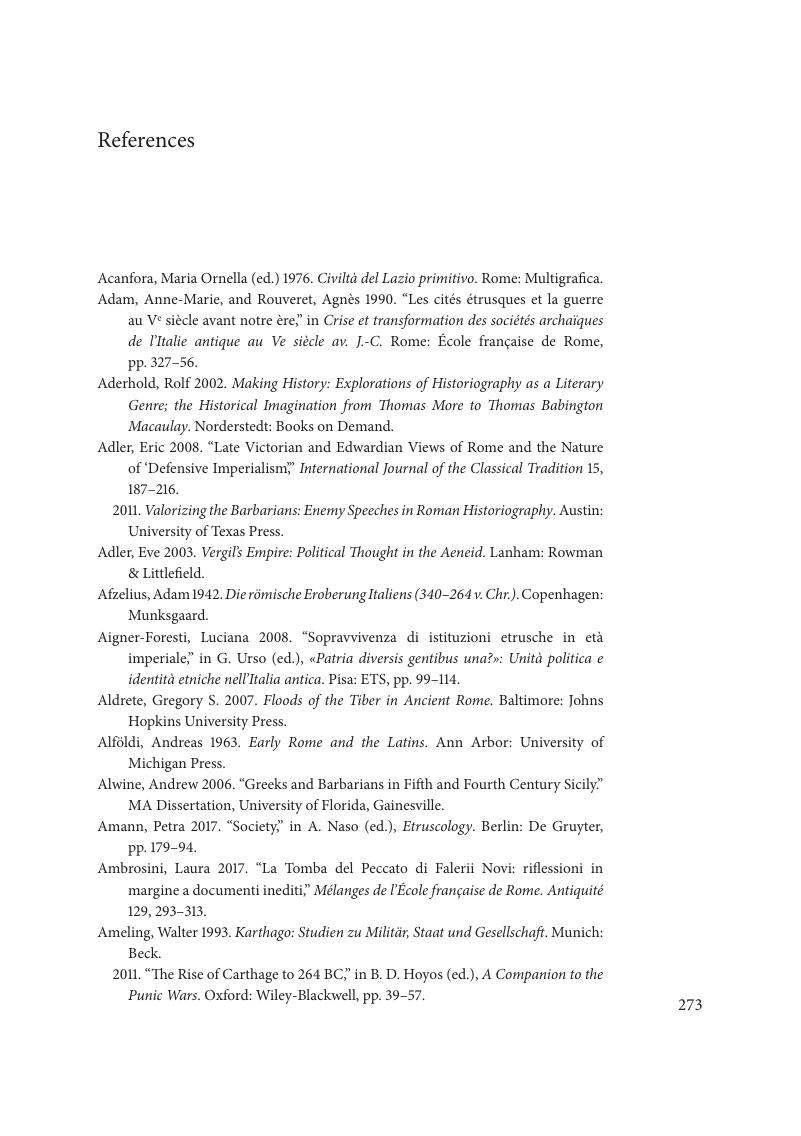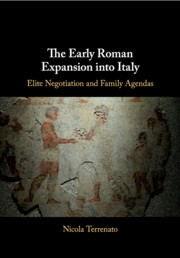Book contents
- The Early Roman Expansion into Italy
- The Early Roman Expansion into Italy
- Copyright page
- Dedication
- Contents
- Illustrations
- Preface
- Acknowledgments
- 1 Views of Roman Imperialism through Time
- 2 The Long-Term Context of Roman Expansion: Central Italian Society and Politics in the Early First Millennium BCE
- 3 The Global Context of Roman Expansion: The Central Mediterranean between the Late Fifth and the Early Third Centuries BCE
- 4 A Heterogeneous Conquest I: A Cross-Section of Polity Biographies and Types of Conflicts
- 5 A Heterogeneous Conquest II: Family Biographies and Agendas
- 6 The Consequences of the Expansion
- 7 Conclusions
- References
- Index
- References
References
Published online by Cambridge University Press: 02 May 2019
- The Early Roman Expansion into Italy
- The Early Roman Expansion into Italy
- Copyright page
- Dedication
- Contents
- Illustrations
- Preface
- Acknowledgments
- 1 Views of Roman Imperialism through Time
- 2 The Long-Term Context of Roman Expansion: Central Italian Society and Politics in the Early First Millennium BCE
- 3 The Global Context of Roman Expansion: The Central Mediterranean between the Late Fifth and the Early Third Centuries BCE
- 4 A Heterogeneous Conquest I: A Cross-Section of Polity Biographies and Types of Conflicts
- 5 A Heterogeneous Conquest II: Family Biographies and Agendas
- 6 The Consequences of the Expansion
- 7 Conclusions
- References
- Index
- References
Summary

- Type
- Chapter
- Information
- The Early Roman Expansion into ItalyElite Negotiation and Family Agendas, pp. 273 - 322Publisher: Cambridge University PressPrint publication year: 2019



